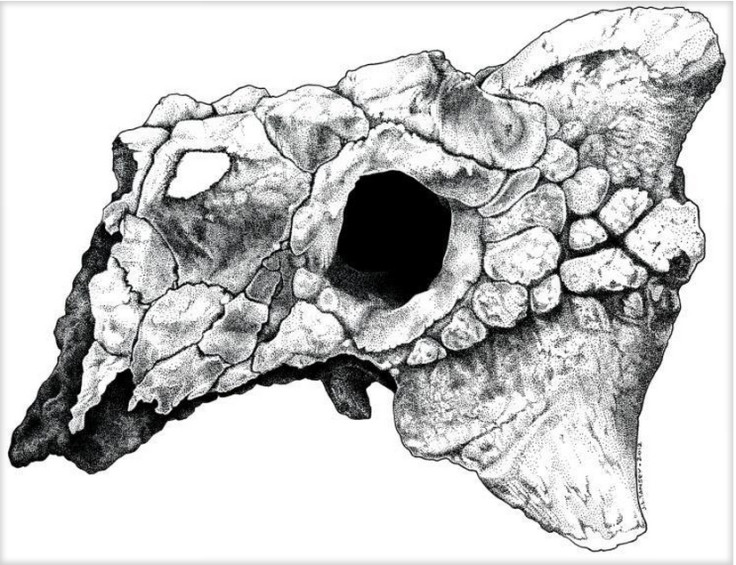Zaraapelta: Paleontologists Name New Armoured Hedgehog Dinosaur

A new species of ankylosaur, which lived in the Gobi Desert, Mongolia, has been named by scientists as Zaraapelta nomadis.
The Zaraapelta was discovered back in 2000, and has been named as a new species of ankylosaur in a paper by Philip Currie and Victoria Arbour, entitled The ankylosaurid dinosaurs of the Upper Cretaceous Baruungoyot and Nemegt formations of Mongolia.
The University of Alberta reports that the name Zaraapelta is a combination of the Mongolian and Greek words for hedgehog and shield, and is a reference to the dinosaur's spiky, armoured body.

The fossilised remains date from the Late-Cretaceous period and include a well-preserved skull with prominent bumps and spikes across the forehead. There is also an elaborate pattern of bumps and grooves located just behind its eyes. On the back of its skull are large horns with a distinctive ridge along the top.
Arbour says that these extravagant bumps and ridges could have developed as ways of showing off to the opposite sex, the same way in which crested hadrosaurs or ceratopsians were believed to.
"You can think of bone as being an expensive item for your body to maintain," she explains. "Bone requires a lot of nutrients and metabolic energy to create, and so that investment needs to pay off in some way. Maybe ankylosaurs had this bumpy ornamentation for protection, but another good explanation is that the horns and bumps on their skulls showed that they were a good mate to choose, in the same way that male peacocks use their tail feathers."
Ankylosaurs, which is Greek for 'fused lizards', were herbivorous dinosaurs, usually with a body of armour and spikes, and a huge club at the end of their tail.
Apart from the Badlands of Alberta, it is believed that the Gobi Desert was home to the highest number of species of ankylosaur, living together at the same time.
© Copyright IBTimes 2025. All rights reserved.





















